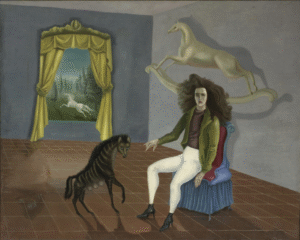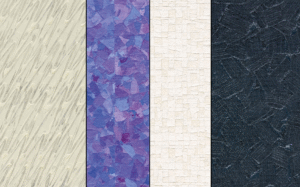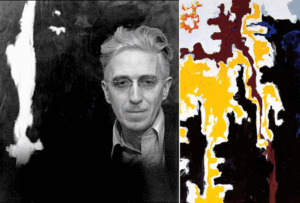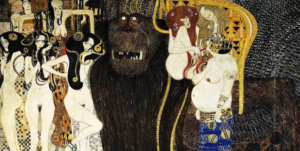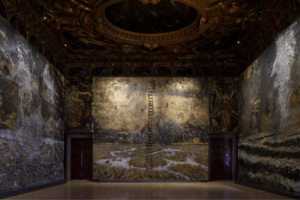Let us start by getting straight to the point — there is no definitive answer to this. However, there are ways to learn what people prefer and what is naturally more appealing to the human eye — which, in turn, can help you decide what you want to go for and ensure that potential buyers notice your original work as an independent artist. Selling art can be a daunting task for creative people, especially those who are not used to research and planning to ensure that your art marketing is being done correctly, ensuring your online platform is seen by the right people. That is why we are here — we shall provide you with information that will help you decide what to put in your online gallery to be noticed by potential art buyers.
Best-selling Painting Themes
Contemporary art or not, some themes are evergreen and will always sell well regardless of the era. Keeping this in mind, especially as an emerging artist, can help boost your initial online sales and help you become a fully-fledged professional artist.
Landscapes
Landscape views are universal; it’s something that everyone can relate to and appreciate. Therefore it’s an easy choice when buying art since buying a landscape painting is like purchasing a specific view people desire to have. This might be something that could be captured in an amateur photograph, but since it’s a thoughtfully chosen composition with a handmade creative touch, that gives it more artistic value. There are many landscape options: seascape, cityscape, jungle, mountaintop, aerial or panoramic — a landscape is the most natural and appealing choice for a wide range of potential art buyers.
Furthermore, keeping in mind the emotion that the landscape carries may help you identify your art audience segment better. For example, paintings of seascapes, harbors, and beaches tend to be associated with vacations and the time to relax. At the same time, semi-abstract, Impressionist, and modern landscapes go well with the minimalistic and contemporary decor that is quite popular nowadays.

Abstract Painting
Regarding abstraction, it can vary from person to person how it’s interpreted. Therefore, many people tend to buy it since when you put an abstract painting on your wall, it can be seen simply as color, shape, and mixture of texture. Abstract art tends to have a symbolic approach — so the style is excellent for all those who wish to have a ‘unified look’ in their homes.
Aesthetic Nudity
People will always enjoy looking at other people, whether it be an art piece, a photo, or in person. Art pieces of nudity and figures vary in styles — from abstract and impressionism to realism and semi-realism. This art theme exists simply for aesthetic and artistic purposes but still may not be a safe choice for the work environment. However, if you specialize in this subject, be prepared to advertise your work outside of social media. Those platforms have many community rules on this category which are primarily concerned with censoring it.
If any one of these themes happens to be your favorite subject matter, then you’re in luck! However, it would help your long-term art career if you remembered that you shouldn’t only concentrate on selling your work. Still, it would be best also to paint what makes you personally fulfilled with occasional commercially-favored art themes to keep people flocking to your art business and growing reputation as a versatile creator.
Which Art is the Best for Online Art Sales?
There is no specific type of art that will always sell the best, whether online or offline. However, there are general ways to improve chances of catching art lovers’ attention and keeping it for more than a glance, transforming them into potential art buyers.
Composition
Whether they be humanoids, animals, or items, the figures you draw need to stand out compared to each other. One of the ways to do this is to concentrate on the height of objects in your paintings. The composition of objects is essential, so if everything in your frame is the same height as if you pulled a ruler over it, the viewer won’t be able to discern the subject matter of the artwork.
Figures and shapes being too close and enclosing in on the viewer’s personal space can be claustrophobic and intimidating, where they look like they’re going to jump right out of the artwork they’re in. That is why it may be a good idea to keep your figures at a reasonable distance, where they will feel more like a part of the painting’s ambiance — unless the effect mentioned above is what you are going for.
Another thing to avoid is your key features and figures in the paintings being engulfed by the environment they’re in. If everything around them is way bigger and busy, the painting’s key elements will be buried away and not noticed. It goes vice versa; if you leave too much space, it will feel too barren, lonely, and perhaps even incomplete.
When composing an art piece, try to exaggerate your elements and figures more than you originally intended them to be, and then ‘cut off’ the extra from them, adjusting them as you draw the sketch. Figures and character’s proportions are similar to compositions of any kind of landscape and environment in this regard.

Atmosphere
An essential thing to keep in mind is that you shouldn’t do the shading before deciding where the light, which would be causing that shade, is coming from. You need to determine the source of light first and possibly include it in the painting, depending on the intensity. The light source isn’t the only critical component to a good atmosphere in your art; color casts are also necessary. Warm and Cold color casts and hues can determine the art’s atmosphere direction and what feelings you want to evoke in the viewer.
Color Palette
Harmonious color palettes are more pleasing to the eye. The less eye strain — the bigger the chance for widening your art market. If the art piece’s saturation is too high, the color contrasts will start to blur, and the painting will begin to look indecipherable to the audience. Whatever your original artwork’s primary focus might be, your main task as an artist is helping people focus their eyes on the most important subject in the painting. Colors and grayscale knowledge play a significant role in this.
The background and the main focus of your paintings need to be different, so one thing can be discerned from the other. That is where the color cast helps, darkening the background and bringing the main focus to light or playing with the saturation. Colors are the number one way to make something stand out from the (possibly) crowded environment.
Background
Try not to draw your painting’s subject matter first — draw them only after you’ve drawn the environment they will appear in. It would help if you kept a watch on the visual hierarchy — i.e., what dominates over other objects in the painting, and what hides behind others. Doing a rough, fast sketch of what you envision in your head is a good start for this, and it’s also called a ‘thumbnail’ — a smaller version of what the final art piece will look like.

The Hiroshige Element
It’s essential to try and put more details in the ‘Hiroshige elements‘ when creating a painting — i.e., adding details to the foreground elements that the human eye is most attracted to.
The subtle use of colors was essential in all Hiroshige’s prints. Hiroshige frequently stylized shapes in his compositions to exaggerate and simplify the environment. Shapes were often cropped to ‘cut the painting’ and transform it into ‘multiple smaller paintings’ that the human eye would be attracted to. The form of the lines is also used in a graphic format to represent the atmosphere (for example — rain or clouds).
The space he left between the lines was also significant, as it is often left empty. The emptiness in that regard was dictating the tension present in the drawing.
Conclusion
In the past, there weren’t any websites that artists could utilize to sell their work. Street fair sales, gallery sales, or using person to person connections — there were various ways to sell your art, but none of them were fast enough and fully secure for selling the original artwork consistently. However, since we have the internet nowadays, information and art of all kinds get shared at lightning speed across the global village. In this regard, the internet dramatically helps younger and older artists boost their careers by helping them reach a marketplace appropriate for their work, an art gallery that will display their work, or by simply exposing their work to a broader audience of potential art buyers.
As long as the work itself is done well and the art marketing is thoroughly researched and planned, you will have success in time. And you could always start your free online art gallery at a place such as ARTDEX. You can post your work and connect with potential buyers and observe how other independent artists are promoting their work — emerging and professional artists alike.


